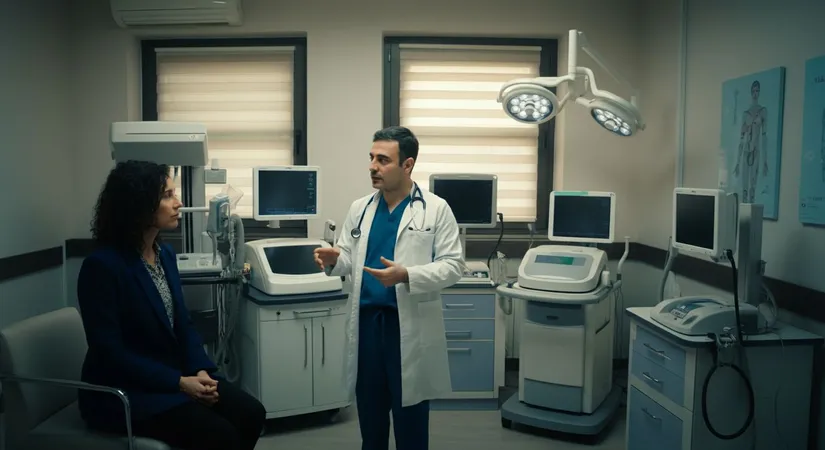The field of healthcare is rapidly evolving, with diagnostic methods playing a pivotal role in precision medicine. By understanding these methods, healthcare professionals can provide tailored treatment plans, enhancing patient outcomes and streamlining medical processes. From traditional techniques to advanced genetic testing, diagnostics are the heartbeat of modern medicine. This article aims to explore various aspects of diagnostics, their advancements, and their impact on healthcare today.
Understanding the Core of Diagnostic Methods
The Evolution of Diagnostic Tools
Diagnostic methods are crucial in modern healthcare, providing insights into patient health through various techniques. Traditional methods like blood tests and X-rays have been foundational. However, technological advancements have significantly enhanced these tools, offering more precise diagnostics.
For instance, the integration of AI in diagnostic methods has revolutionized medical diagnostics by enabling faster and more accurate disease detection. AI algorithms can analyze complex data sets, identifying patterns that might be missed by human eyes. This has been particularly beneficial in imaging diagnostics, where AI can assist in detecting anomalies in MRIs or CT scans.
Moreover, genetic testing has become a pivotal part of personalized healthcare. By analyzing an individual’s genetic makeup, healthcare providers can predict susceptibility to certain diseases and tailor preventive measures accordingly. This approach not only improves patient outcomes but also reduces healthcare costs by preventing disease progression.
Key Features of Modern Diagnostic Tools
- Non-invasive procedures: Techniques like saliva tests offer less discomfort compared to traditional methods.
- Real-time monitoring: Devices such as wearable sensors provide continuous health data.
- Portable solutions: Handheld diagnostic devices enable remote healthcare delivery.
Steps in Implementing Advanced Diagnostic Methods
- Identify the appropriate diagnostic tool based on the patient’s symptoms and medical history.
- Conduct the diagnostic procedure, ensuring accuracy and precision in data collection.
- Analyze the results using advanced software to provide a comprehensive health assessment.
In conclusion, the evolution of diagnostic methods has significantly impacted healthcare, making it more efficient and personalized. By leveraging advanced technologies, healthcare providers can offer better patient care and improve overall health outcomes.

Exploring Advanced Diagnostic Tools for Doctors
Innovations in Diagnostic Technologies
Today’s healthcare landscape is enriched by cutting-edge diagnostic tools that enhance medical diagnostics. Next-generation sequencing (NGS) is a prime example, allowing for comprehensive genetic analysis that aids in identifying genetic disorders and tailoring personalized treatment plans.
Portable ultrasound devices have revolutionized point-of-care diagnostics, enabling doctors to perform real-time imaging in various settings, from clinics to remote locations. This flexibility improves access to medical diagnostics, especially in underserved areas.
Moreover, AI-driven diagnostic tools are transforming clinical diagnostics by providing rapid and accurate interpretations of complex data. For instance, AI algorithms can analyze imaging data to detect early signs of diseases like cancer, significantly improving early disease detection rates.
Key Benefits of Advanced Diagnostic Tools
- Enhanced accuracy: Advanced tools reduce human error, providing precise diagnostic results.
- Faster results: Technologies like NGS deliver quick insights, expediting treatment decisions.
- Improved accessibility: Portable devices bring diagnostics to remote and resource-limited areas.
Implementing Advanced Diagnostic Technologies
- Integrate AI tools to analyze patient data efficiently and accurately.
- Utilize portable devices for on-site diagnostics, enhancing patient care.
- Adopt NGS for comprehensive genetic profiling, aiding in personalized medicine.
In summary, the integration of advanced diagnostic tools in healthcare is pivotal for improving patient outcomes. By leveraging these technologies, healthcare providers can offer more accurate, timely, and accessible diagnostics, ultimately enhancing the quality of care.

The Role of AI in Revolutionizing Medical Diagnostics
AI’s Impact on Diagnostic Accuracy and Speed
AI technologies are transforming medical diagnostics by enhancing accuracy and speed. Machine learning algorithms analyze vast datasets, identifying disease patterns with precision. This reduces human error and allows for continuous learning, improving healthcare delivery.
For example, AI can swiftly process imaging data, detecting anomalies in MRIs or CT scans that might be overlooked by human eyes. This capability is crucial in early disease detection, where timely intervention can significantly alter patient outcomes.
Moreover, AI-driven diagnostic tools facilitate personalized healthcare by tailoring treatment plans based on individual patient data. This approach not only optimizes treatment efficacy but also minimizes unnecessary interventions, enhancing patient safety.
Key Advantages of AI in Medical Diagnostics
- Enhanced precision: AI algorithms provide highly accurate diagnostic results, reducing misdiagnosis.
- Rapid processing: AI tools deliver quick insights, expediting clinical decision-making.
- Continuous improvement: AI systems learn from new data, constantly refining diagnostic capabilities.
Implementing AI in Diagnostic Processes
- Integrate AI algorithms into existing diagnostic workflows to enhance data analysis.
- Train healthcare professionals to interpret AI-generated insights effectively.
- Continuously update AI systems with new data to maintain diagnostic accuracy.
In conclusion, AI’s integration into medical diagnostics is revolutionizing the field by providing more accurate, faster, and personalized healthcare solutions. As AI technologies continue to evolve, their role in diagnostics will only become more pivotal, ultimately improving patient care and outcomes.
How Diagnostic Testing Enhances Disease Detection
Innovative Diagnostic Methods for Early Detection
Timely diagnostic testing plays a pivotal role in early disease detection and treatment. With the advent of liquid biopsies, medical diagnostics have reached new heights, allowing for the detection of diseases at a molecular level. This non-invasive method analyzes circulating tumor DNA, providing insights into cancer presence before symptoms appear.
Wearable health technology is another breakthrough in diagnostic methods, offering real-time health monitoring. Devices like smartwatches track vital signs continuously, alerting users to potential health issues. This proactive approach enables early intervention, improving patient outcomes significantly.
Moreover, advancements in biomarker identification have enhanced diagnostic procedures. By identifying specific biomarkers associated with diseases, healthcare providers can diagnose conditions more accurately and swiftly. This precision in medical diagnostics reduces the risk of misdiagnosis and ensures timely treatment.
Key Benefits of Modern Diagnostic Testing
- Early detection: Identifying diseases before symptoms manifest improves treatment success rates.
- Non-invasive techniques: Methods like liquid biopsies reduce patient discomfort and risk.
- Continuous monitoring: Wearable devices provide real-time health data, enabling proactive care.
Steps to Implement Effective Diagnostic Testing
- Utilize liquid biopsies for early cancer detection, enhancing treatment planning.
- Incorporate wearable technology for continuous health monitoring and data collection.
- Leverage biomarker analysis to refine diagnostic accuracy and personalize treatment.
In conclusion, the integration of innovative diagnostic methods significantly enhances disease detection capabilities. By adopting these advanced tools, healthcare providers can offer more precise, timely, and effective care, ultimately improving patient health outcomes.
AI-Driven Precision in Medical Diagnostics
Innovative Diagnostic Tools Enhancing Healthcare Accessibility
Enhancing Disease Detection with Advanced Diagnostic Testing
Frequently Asked Questions
What are the benefits of using AI in clinical decision-making?
How do portable medical diagnostic devices improve healthcare accessibility?
What role does genetic testing play in precision medicine diagnostics?
How do non-invasive diagnostic procedures benefit patients?
What are the latest innovations in medical imaging technologies?
Discover the path to holistic wellness and rejuvenate your mind and body with Vitalica Wellness. Call us today for a free consultation and start your journey to a healthier you!
